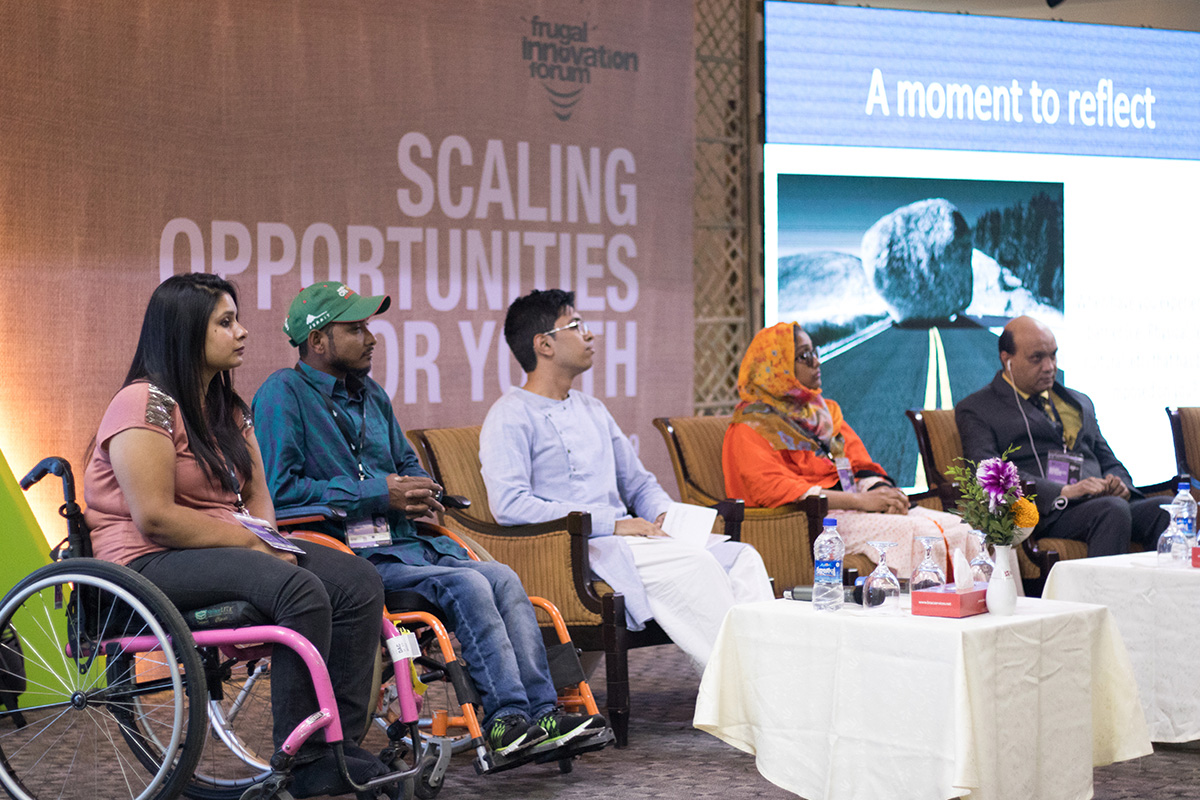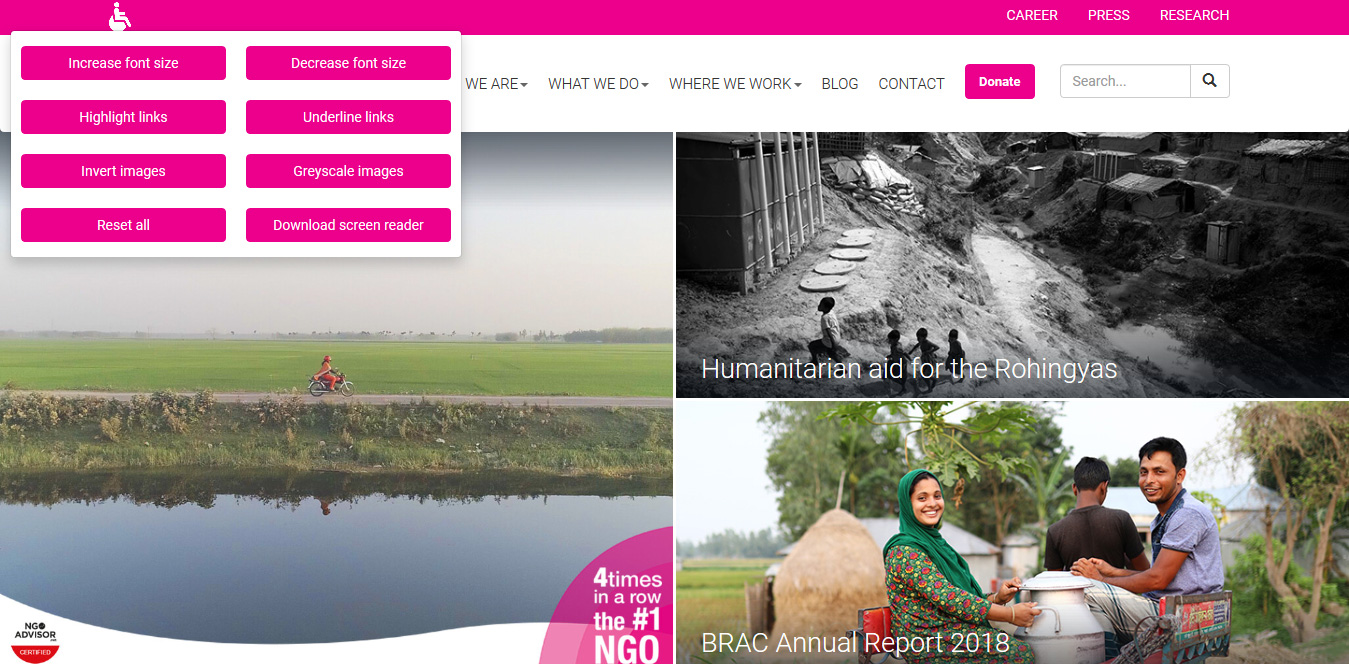Reading Time: 3 minutes
At this year’s BRAC Frugal Innovation Forum, I had the opportunity to meet Mr Vashkar Bhattacharjee, National Consultant for Accessibility at a2i. Vashkar da sat right next to me at dinner and what happened right after was something that I will cherish forever.
I had always considered myself to be inclusive. Growing up, my parents ran a very gender-balanced ship at home, ensuring everything was equal between my sister and I. My mom was possibly the only female driver I knew of, dropping us off for school or birthday parties. At university, my roommates were Jewish, Roman Catholic and Presbytarian. At work, I had friends who were in same sex relationships. Yet, after that particular dinner conversation, I realised that I was not completely inclusive.
Vashkar da, had lost his vision after birth and had spent his entire life making strides in advocating rights for persons with disabilities. I didn’t figure out that my Chandler Bing-esqe hand gestures during the conversation with him were of no effect. I had no idea that the everyday things around me were made to include people with disabilities, like the middle row of tiles on sidewalks which look different, or the tiles on inclines that resemble lego blocks to ensure a blind person knows his or her bearing. When we finished our dinner and parted, I spent the rest of the night thinking that I had never actually taken people with disabilities in the way a truly inclusive person in my community would have.

Vashkar Bhattacharjee (far right) speaking at the disability inclusion panel at this year’s Frugal Innovation Forum.Photo Credit©BRAC
2018 was a year of stronger commitment towards disability inclusion for BRAC. Besides driving inclusive organisation-wide changes, BRAC’s advocacy for social change programme over the last few months, has taken the initiative to make BRAC’s global website accessible. Managing the digital communications team, this became a big part of what the team had to build from the ground up. Partha S Karmaker, who I have termed “BRAC Wikipedia” due to his near superhuman knowledge and recollection of all things BRAC led the way to create the site. We met with Vashkar da again during a workshop he conducted to help us understand accessible modes of communication.
What we learned on the very first day was the various features that a website needed in order to accommodate the various forms of disability. Unlike regular sites, a man or woman with an articulate voice named SAM (software automatic mouth) dictates what’s on the screen. Using the tab key, users can navigate through choices such as menus, sub-menus and dropdown options. Even images are described so we had to ensure that the metadata of the image is properly defined and isn’t called something like “Untitled1.jpg”. These are known as alternative tags to define every piece of content on the website. SAM’s reading is also user controlled. Vashkar da could hear at a blistering pace, but we had to turn it down to 60-80 words per minute to grab everything being said.
Other accessibility features were the options of changing font sizes, inverted colors and a grayscale colour option to reduce eye strain.

BRAC’s website’s new accessibility features. To learn more click the link at the end of the article.
Once the website was up and ready to run, Vashkar da and his team from A2i did an entire audit of the site. We are now proud to say that the BRAC website is one of the first INGO website in the country to have accessible features. Feedbacks and continual updates are what we thrive upon and the website is no different, keeping in line with two of the organisation’s core values: innovation and inclusiveness.
My dinner conversation and subsequent meetings with Vashkar da brought my notions of including people with disabilities in our daily digital and analog life into a new light. We can only hope that one day schools, workplaces and public spaces in Bangladesh will follow suite and ensure that anyone with a disability is not left behind when designing any experience.
Download the guide to all the accessibility features of the BRAC site here.
Visit www.brac.net to browse the accessibility features and we would love to hear back from you in order to make the features better. Please send all feedback to info@brac.net.
Mehran Khan is the channel management head of BRAC Communications.





